Tanning beds and psoriasis. Tanning for Psoriasis Relief: Understanding Light Therapy and Risks
How does light therapy impact psoriasis symptoms. What are the differences between medical phototherapy and tanning beds. Is natural sunlight beneficial for psoriasis management. What are the potential risks of using tanning beds for psoriasis relief.
Understanding Psoriasis and Its Treatment Options
Psoriasis is a complex immune-mediated skin condition characterized by raised, itchy plaques on the skin. While there’s no definitive cure, various treatment options can help manage symptoms and improve quality of life. These include topical medications, oral drugs, injections, and light therapy.
One of the most intriguing aspects of psoriasis management is the role of light exposure. Many individuals with psoriasis report improvements in their skin condition after sun exposure. This observation has led to the development of controlled light therapy treatments, also known as phototherapy.
The Science Behind Light Therapy for Psoriasis
Light therapy utilizes ultraviolet (UV) rays to slow down the rapid cell growth associated with psoriasis. Both UVA and UVB rays can be beneficial, but they work in slightly different ways:

- UVB rays penetrate the skin and slow the growth of affected skin cells
- UVA rays, when combined with certain medications, can help reduce inflammation and skin cell turnover
These effects can lead to a reduction in psoriasis symptoms, including scaling, itching, and redness. However, it’s crucial to understand that not all forms of UV exposure are created equal when it comes to psoriasis treatment.
Medical Phototherapy: A Controlled Approach to Light Treatment
Medical phototherapy is a doctor-supervised treatment that uses controlled doses of UV light to target psoriasis symptoms. There are several types of phototherapy available:
UVB Phototherapy
This form of treatment exposes the skin to UVB light for short periods. It can be administered as a whole-body treatment or targeted to specific areas. UVB phototherapy is often preferred because it uses limited wavelengths, reducing the risk of skin damage and sunburn.
PUVA Treatment
Psoralen UVA (PUVA) treatment combines UVA light exposure with a medication called psoralen. This medication can be taken orally or applied topically. PUVA is typically used for more widespread psoriasis cases but is not recommended for long-term use due to potential side effects.
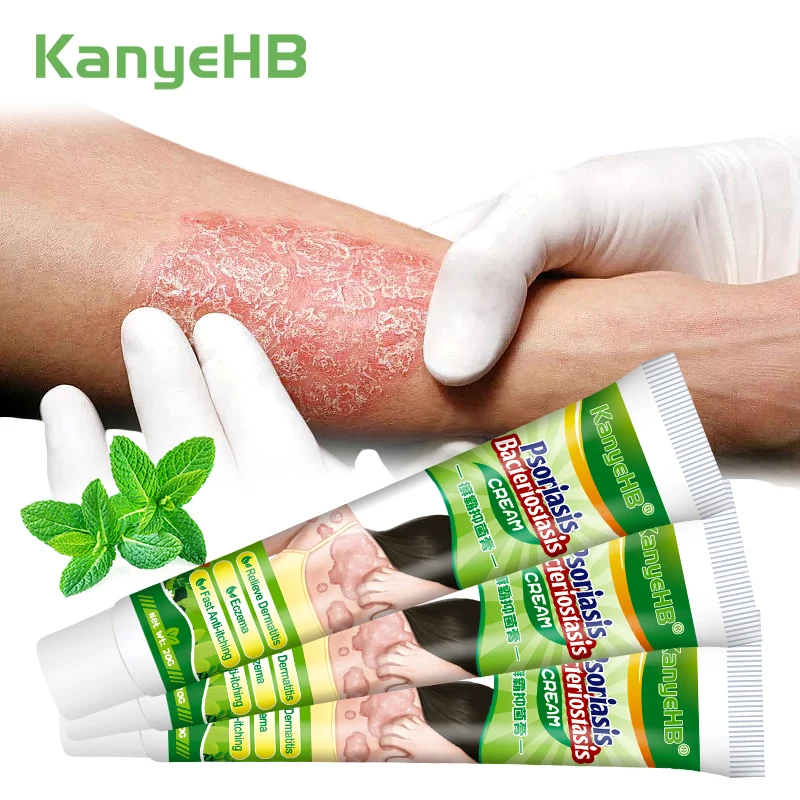
Laser Treatment
Laser therapy delivers high levels of UVB light to specific psoriasis-affected areas. This targeted approach can be beneficial for treating stubborn plaques without exposing unaffected skin to UV radiation.
Natural Sunlight: A Double-Edged Sword for Psoriasis
While many people with psoriasis find that sun exposure improves their symptoms, it’s important to approach natural sunlight therapy with caution. Dermatologists often recommend short, controlled periods of sun exposure, typically 5-10 minutes of midday sun daily.
However, excessive sun exposure can trigger psoriasis flare-ups and increase the risk of skin cancer. It’s crucial to balance the potential benefits with the risks, especially considering that some psoriasis medications can increase sun sensitivity.
Sun Protection for Psoriasis Patients
For individuals with psoriasis, sun protection is vital. Here are some guidelines:
- Use fragrance-free, mineral-based sunscreens on unaffected skin
- Consider wearing UV-protective clothing, especially if sunscreen irritates psoriasis plaques
- Limit sun exposure to short periods and avoid peak UV hours
- Consult a dermatologist for personalized sun protection advice
Tanning Beds and Psoriasis: A Controversial Topic
The use of tanning beds for psoriasis relief is a contentious issue in the medical community. While some individuals report improvements in their psoriasis symptoms after using tanning beds, many medical organizations, including the National Psoriasis Foundation and the American Academy of Dermatology, strongly discourage their use.
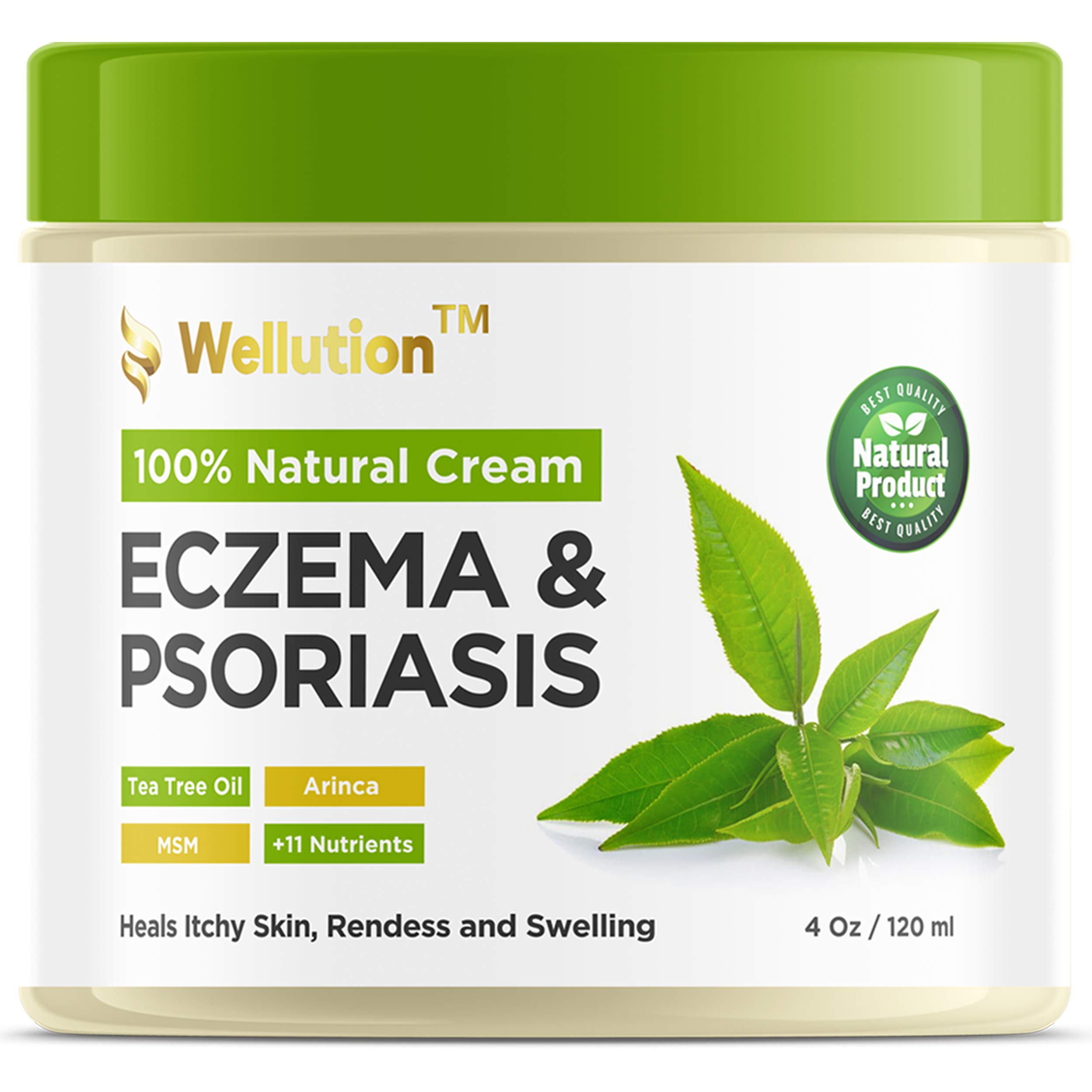
Why Are Tanning Beds Discouraged for Psoriasis Treatment?
- Tanning beds primarily emit UVA light, which is less effective for psoriasis treatment without accompanying medication
- The intensity and duration of UV exposure in tanning beds are not controlled for medical purposes
- Tanning beds significantly increase the risk of skin cancer and premature skin aging
- They can cause burns and other skin damage, potentially exacerbating psoriasis symptoms
Given these concerns, it’s crucial to discuss any plans to use tanning beds with a dermatologist or healthcare provider specializing in psoriasis treatment.
Comparing Medical Phototherapy and Tanning Beds
Understanding the differences between medical phototherapy and tanning beds is crucial for making informed decisions about psoriasis management:
| Aspect | Medical Phototherapy | Tanning Beds |
|---|---|---|
| UV Light Type | Controlled UVB or UVA with medication | Primarily UVA |
| Supervision | Doctor-supervised | Unsupervised |
| Dosage Control | Precise and tailored to individual needs | Not medically controlled |
| Cancer Risk | Monitored and minimized | Significantly increased |
| Effectiveness for Psoriasis | Proven effective in clinical studies | Limited evidence, potentially harmful |
Potential Risks and Side Effects of Light Therapy
While light therapy can be an effective treatment for psoriasis, it’s not without risks. Understanding these potential side effects is crucial for anyone considering this treatment option:
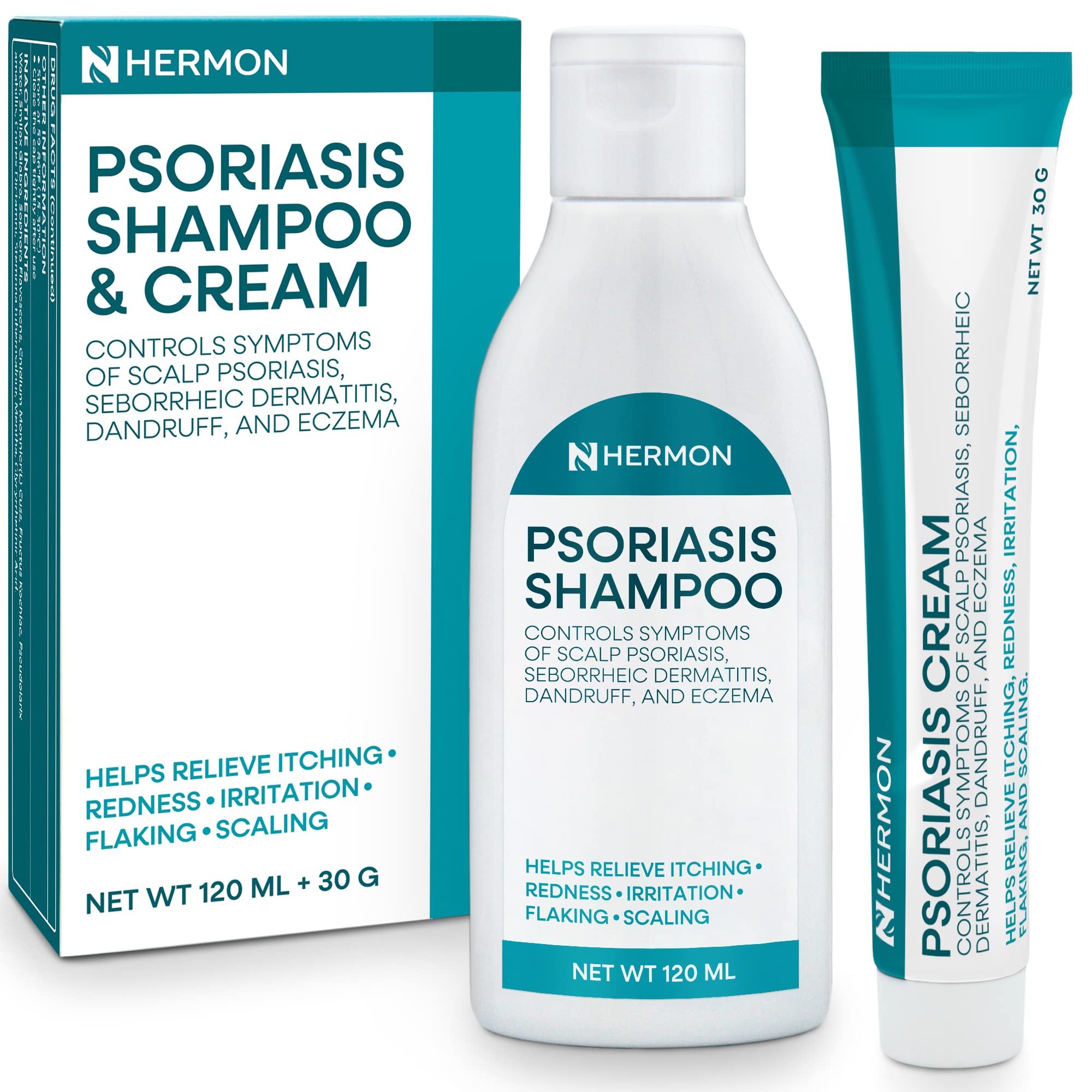
Short-Term Side Effects
- Skin redness and itching
- Temporary worsening of psoriasis symptoms
- Dry skin
- Blistering (in rare cases)
Long-Term Risks
- Increased risk of skin cancer, especially with prolonged use
- Premature skin aging
- Development of cataracts
- Increased sun sensitivity
It’s important to note that these risks are generally lower with controlled medical phototherapy compared to unregulated tanning bed use or excessive sun exposure. Regular skin checks and eye exams are typically recommended for individuals undergoing long-term light therapy.
Integrating Light Therapy into a Comprehensive Psoriasis Treatment Plan
While light therapy can be an effective component of psoriasis treatment, it’s typically most successful when integrated into a comprehensive management plan. This may include:
- Topical treatments: Corticosteroids, vitamin D analogues, or other medicated creams and ointments
- Systemic medications: Oral or injected drugs that work throughout the body
- Lifestyle modifications: Stress management, dietary changes, and avoiding known triggers
- Regular moisturizing: To reduce scaling and itching
- Gentle skin care: Using mild, fragrance-free products
The ideal treatment plan varies from person to person, depending on the severity of psoriasis, overall health, and individual response to different therapies. Regular consultations with a dermatologist or psoriasis specialist are crucial for adjusting the treatment plan as needed.

Emerging Light-Based Therapies for Psoriasis
As research in psoriasis treatment continues, new light-based therapies are being developed and refined. Some of these emerging treatments include:
Blue Light Therapy
Unlike UV light, blue light doesn’t cause DNA damage or increase skin cancer risk. Early studies suggest it may help reduce inflammation and slow skin cell growth in psoriasis patients.
LED Light Therapy
LED devices emitting specific wavelengths of light are being investigated for their potential in psoriasis treatment. These may offer a safer alternative to UV light therapy.
Photodynamic Therapy
This treatment combines light-sensitive drugs with light exposure to target psoriasis plaques. While primarily used for certain skin cancers, its potential for psoriasis treatment is being explored.
While these therapies show promise, more research is needed to establish their long-term efficacy and safety for psoriasis treatment. As always, it’s essential to consult with a healthcare provider before trying any new treatment.
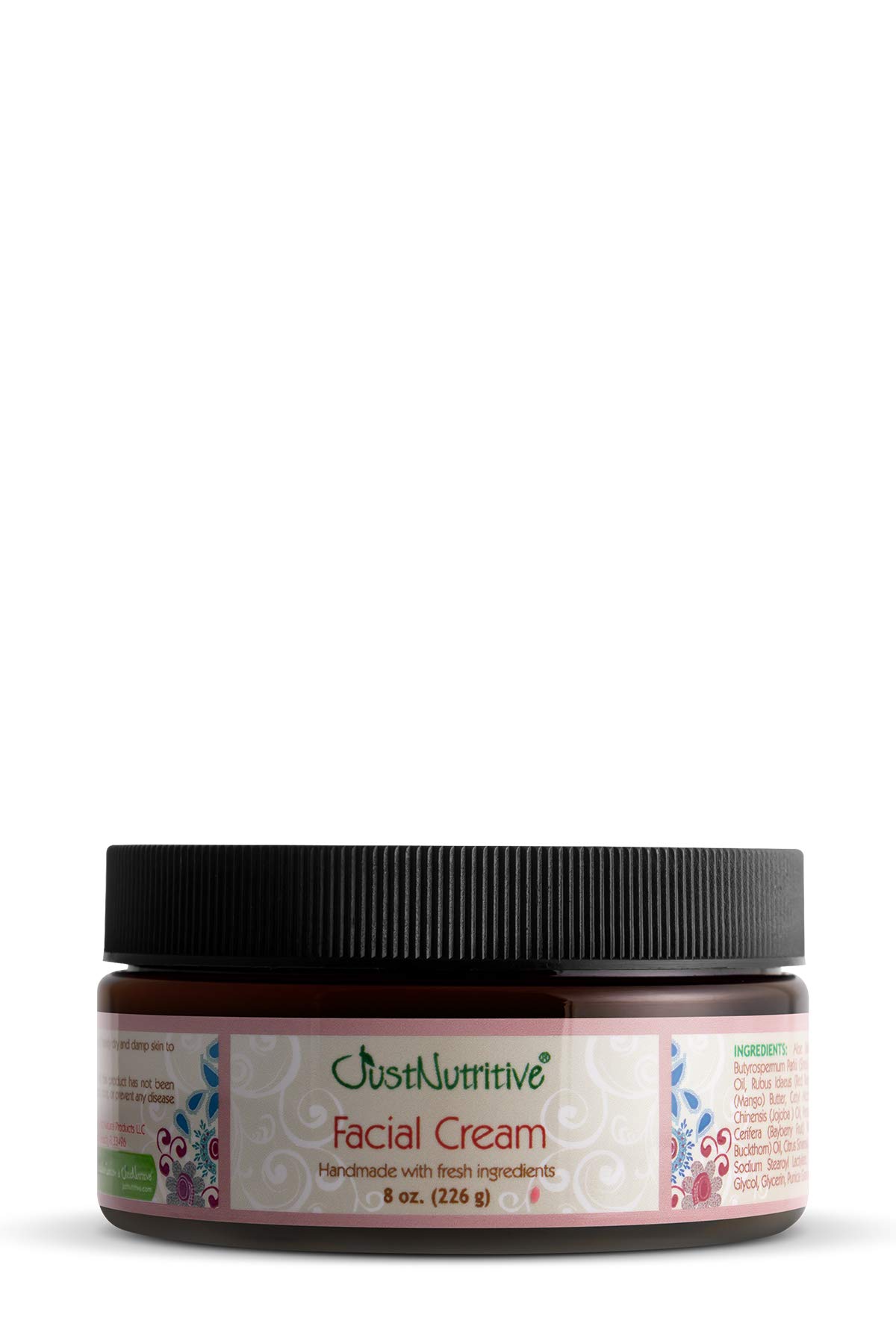
The Psychological Impact of Psoriasis and Light Therapy
Psoriasis is more than just a skin condition; it can have significant psychological and emotional effects. The visible nature of psoriasis symptoms can lead to self-consciousness, anxiety, and depression in some individuals. Light therapy, by improving skin appearance, may have positive effects on mental health and quality of life.
Benefits Beyond Skin Clearance
- Improved self-esteem and body image
- Reduced anxiety and depression symptoms
- Increased social confidence
- Better overall quality of life
However, it’s important to address the psychological aspects of psoriasis directly. Many dermatologists and psoriasis treatment centers offer support groups or can provide referrals to mental health professionals experienced in working with individuals with chronic skin conditions.
Making Informed Decisions About Light Therapy for Psoriasis
When considering light therapy or any other treatment for psoriasis, it’s crucial to make informed decisions based on scientific evidence and professional medical advice. Here are some key points to keep in mind:
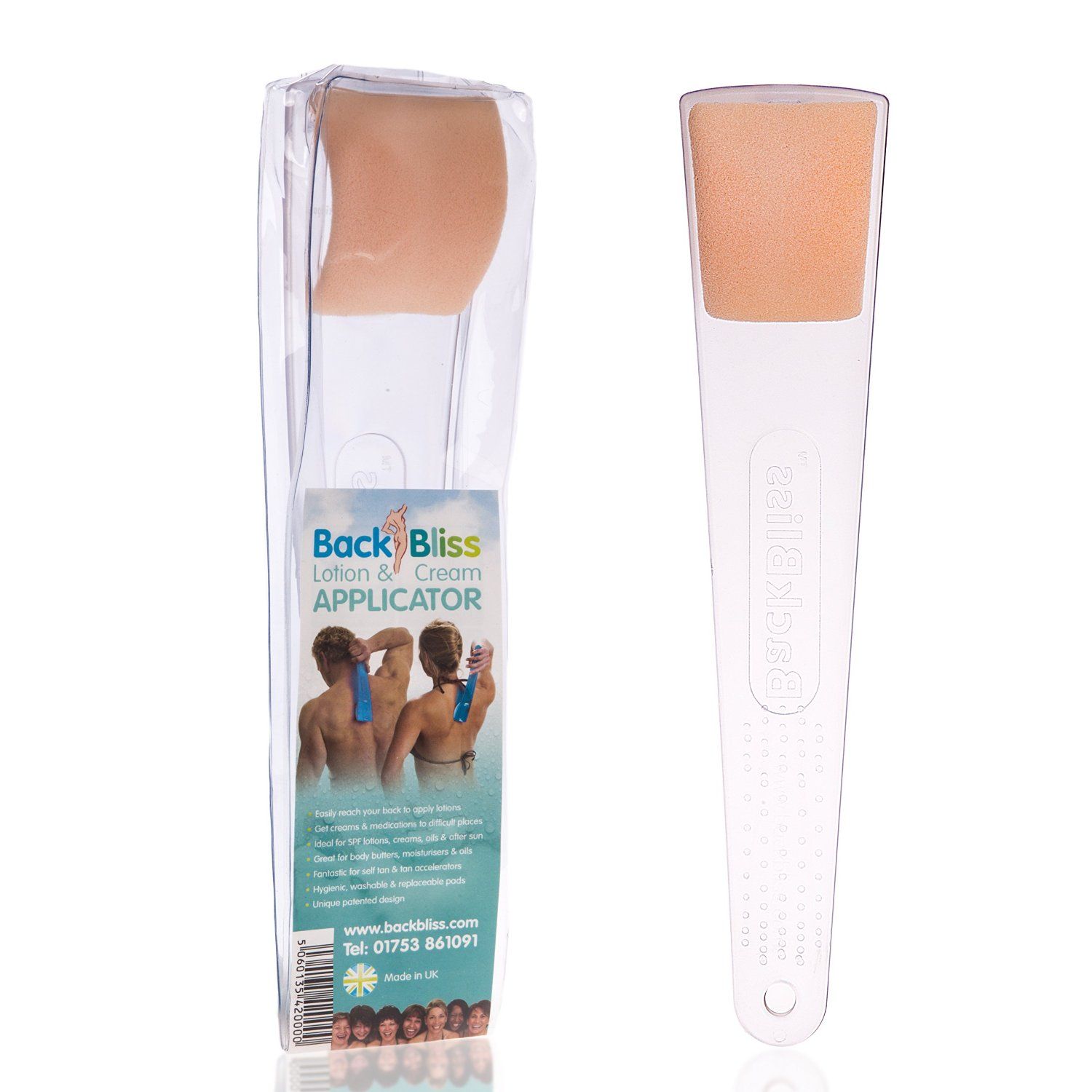
- Consult with a dermatologist or psoriasis specialist to determine if light therapy is appropriate for your specific case
- Understand the differences between medical phototherapy and uncontrolled UV exposure (such as tanning beds)
- Be aware of potential risks and side effects associated with different forms of light therapy
- Consider light therapy as part of a comprehensive psoriasis management plan, not as a standalone treatment
- Be patient and consistent with treatment, as results may take time to become apparent
- Regularly review and adjust your treatment plan with your healthcare provider
By taking these factors into account, individuals with psoriasis can work towards achieving optimal symptom management and improved quality of life. Remember, while the allure of quick fixes like tanning beds may be tempting, the long-term risks often outweigh any potential short-term benefits. Stick to medically supervised treatments and always prioritize your overall health and well-being.
Tanning for Psoriasis Relief: Know the Facts
Psoriasis is an immune-mediated skin condition that leads to raised, itchy skin plaques. It can also affect other areas of the body such as the joints. While there’s no cure, it can be managed with proper treatment and modifications.
You may be considering different treatment options for psoriasis. One option is light therapy, or phototherapy. Doctor-supervised light therapy is a medically supported treatment for psoriasis.
But phototherapy isn’t the same as tanning. Here’s what to know.
Many people find that sun exposure helps improve psoriasis skin. But tanning isn’t considered a traditional psoriasis treatment option.
Your overall treatment approach should focus on preserving quality of life and lowering the likelihood of flare-ups. You may need to identify psoriasis triggers and avoid them to lessen your chances of flare-ups.
It’s important to work with a doctor or healthcare professional to develop the best psoriasis treatment plan for you. That may include:
That may include:
- topical medications
- light therapy
- oral medications
- injected medications
In particular, light therapy somewhat mimics the benefits of sun exposure on psoriasis skin. It uses ultraviolet rays under doctor supervision to help improve psoriasis.
If you and a doctor determine phototherapy might be a good addition to your psoriasis treatment plan, here’s what you should know.
Ultraviolet A (UVA) and ultraviolet B (UVB) light can help control your psoriasis. Many kinds of light therapy are available, including targeted and whole-body treatments. These treatments slow overactive T cells and reduce flare-ups. A doctor can help you decide whether this method is right for you.
Some types of light therapy include:
Natural sunlight therapy
You can use the ultraviolet light that comes naturally from sunlight to treat psoriasis. It’s recommended that you spend at least 5 to 10 minutes in the midday sun each day. Don’t stay out for very long, though. Too much sun exposure can also cause psoriasis to flare up.
Don’t stay out for very long, though. Too much sun exposure can also cause psoriasis to flare up.
Observe how your skin tolerates sunlight. Some psoriasis treatments may make you more sensitive to sunlight. Be careful not to overexpose your skin.
People living with psoriasis are generally advised to apply fragrance-free, mineral-based sunscreens to their entire body. This helps lower the risk of skin cancer, especially considering certain psoriasis medications can increase the risk of skin cancer.
However, some people should avoid applying sunscreen directly on skin that’s affected by psoriasis. For those people, wearing ultraviolet protection factor clothing may be recommended. Ask a doctor for individualized sun protection guidelines.
UVB phototherapy
This therapy exposes you to UVB light for short periods of time in a controlled environment. This type of light therapy uses limited wavelengths to decrease the risk of sunburn and skin damage. Different types of UVB therapy can be used to target a specific area or the whole body.
Your psoriasis may get worse before it improves with this therapy. You can receive treatment at a doctor’s office or at home.
The light from this therapy can cause the treated skin to tan or darken. If you have skin of color, it can also cause dark spots on your skin to become more noticeable. The American Academy of Dermatology (AAD) advises that people should speak with a dermatologist if they want to avoid skin darkening from this treatment.
PUVA treatment
For psoralen UVA (PUVA) treatment, the medication psoralen is used alongside UVA light therapy. Psoralen can be taken orally or topically. The combination of psoralen with UVA light slows the overproduction of skin cells related to psoriasis.
This type of light therapy is typically used for people who have more widespread psoriasis.
PUVA treatment is typically not recommended for long-term use. Your skin may become itchy or irritated at first with this method. Moisturizers can help relieve these side effects. This treatment can also cause nausea and headache.
This treatment can also cause nausea and headache.
Laser treatment
High levels of UVB light can be administered by a laser to treat specific areas affected by psoriasis. You may receive a course of laser treatment over several days, weeks, or months.
Each type of light or laser therapy has its own benefits and side effects. Work with a doctor to choose the best option for you.
The benefits of tanning beds aren’t clear. Tanning beds may help improve psoriasis, but they’re known to cause significant sun damage as well as cancer. As a result, the use of tanning beds is actively discouraged by many medical groups.
The National Psoriasis Foundation discourages the use of indoor tanning beds for a variety of reasons. One is that tanning beds generally emit more UVA light than UVB light. UVA light without medication, such as psoralen, is relatively ineffective at treating psoriasis.
In addition, the AAD opposes the use of tanning beds because prolonged or frequent exposure to radiation from sun lamps could lead to skin cancer.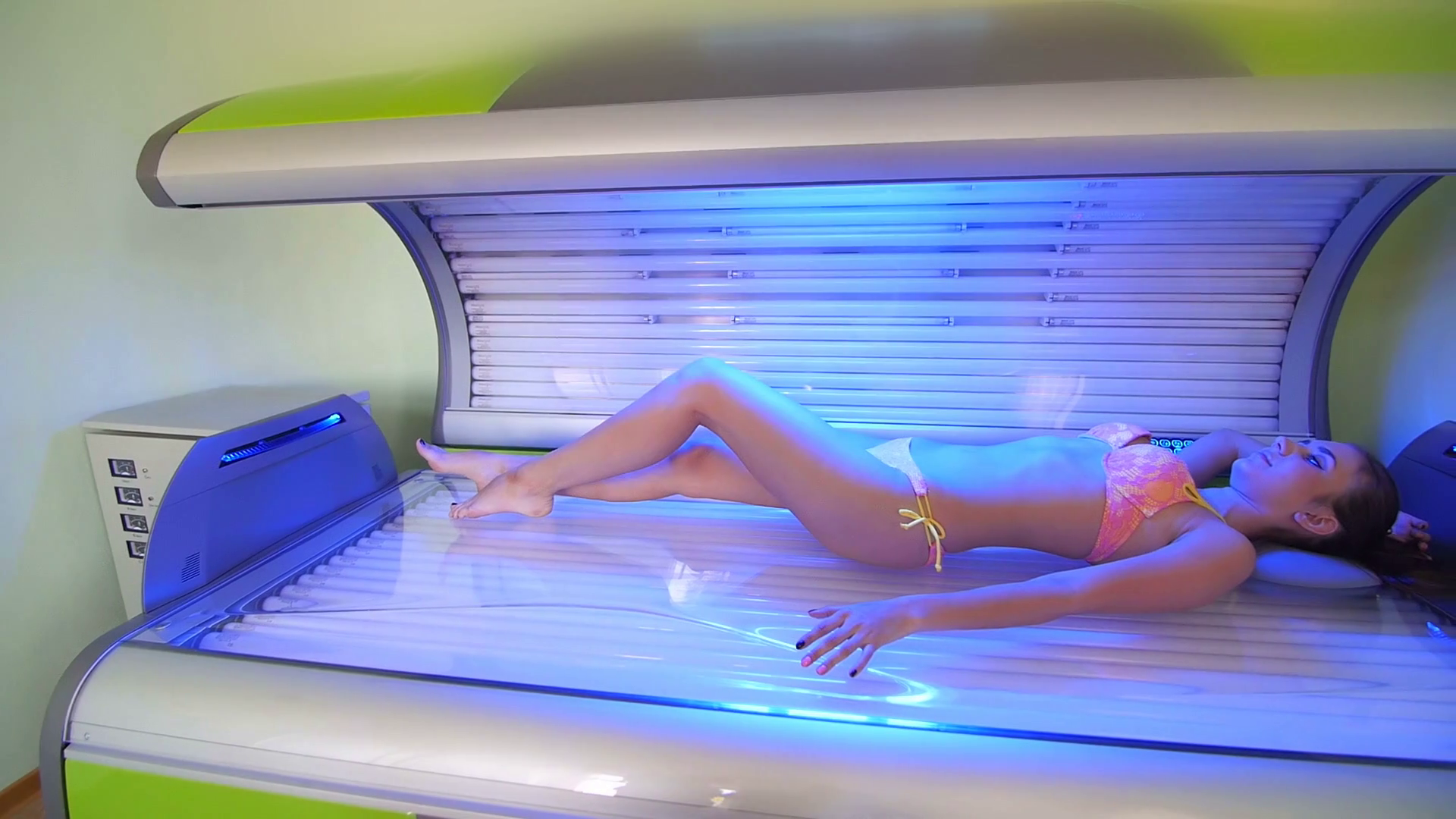
Some people are also at risk of developing tanning addiction.
Still, some research suggests that indoor tanning beds may help psoriasis. A 2015 study concluded that indoor tanning beds may be useful in treating dermatologic conditions for people who are unable to access light therapy prescribed and managed by a doctor. The study encourages doctors to provide guidelines for this practice, as many try it anyway.
If you’re considering indoor tanning, speak with a doctor about the risks ahead of time. Ask about phototherapy, which is a much safer, more effective option.
When compared with phototherapy, exposure to natural sunlight, or tanning, comes with many risks.
Indoor tanning isn’t as effective as phototherapy. It also increases the risk of melanoma by 59%.
Some topical psoriasis medications, including coal tar and tazarotene, can also increase your risk of sunburn.
Certain oral medications, such as soriatane and methotrexate, can also increase the risk of skin burns as well as skin cancer.
Other immunosuppressive drugs, such as biologics, which lower immune system activity, can also increase the risk of skin cancer.
Prescription phototherapy is done under medical supervision to ensure safety and monitor for side effects such as skin damage and sunburn.
Light therapy is one method for treating psoriasis, but it isn’t the only option. Work with a doctor to determine the best course of action for treating your psoriasis. Together, you can develop a treatment plan that best suits your lifestyle and needs.
Tanning for Psoriasis Relief: Know the Facts
Psoriasis is an immune-mediated skin condition that leads to raised, itchy skin plaques. It can also affect other areas of the body such as the joints. While there’s no cure, it can be managed with proper treatment and modifications.
You may be considering different treatment options for psoriasis. One option is light therapy, or phototherapy. Doctor-supervised light therapy is a medically supported treatment for psoriasis.
But phototherapy isn’t the same as tanning. Here’s what to know.
Many people find that sun exposure helps improve psoriasis skin. But tanning isn’t considered a traditional psoriasis treatment option.
Your overall treatment approach should focus on preserving quality of life and lowering the likelihood of flare-ups. You may need to identify psoriasis triggers and avoid them to lessen your chances of flare-ups.
It’s important to work with a doctor or healthcare professional to develop the best psoriasis treatment plan for you. That may include:
- topical medications
- light therapy
- oral medications
- injected medications
In particular, light therapy somewhat mimics the benefits of sun exposure on psoriasis skin. It uses ultraviolet rays under doctor supervision to help improve psoriasis.
If you and a doctor determine phototherapy might be a good addition to your psoriasis treatment plan, here’s what you should know.
Ultraviolet A (UVA) and ultraviolet B (UVB) light can help control your psoriasis. Many kinds of light therapy are available, including targeted and whole-body treatments. These treatments slow overactive T cells and reduce flare-ups. A doctor can help you decide whether this method is right for you.
Many kinds of light therapy are available, including targeted and whole-body treatments. These treatments slow overactive T cells and reduce flare-ups. A doctor can help you decide whether this method is right for you.
Some types of light therapy include:
Natural sunlight therapy
You can use the ultraviolet light that comes naturally from sunlight to treat psoriasis. It’s recommended that you spend at least 5 to 10 minutes in the midday sun each day. Don’t stay out for very long, though. Too much sun exposure can also cause psoriasis to flare up.
Observe how your skin tolerates sunlight. Some psoriasis treatments may make you more sensitive to sunlight. Be careful not to overexpose your skin.
People living with psoriasis are generally advised to apply fragrance-free, mineral-based sunscreens to their entire body. This helps lower the risk of skin cancer, especially considering certain psoriasis medications can increase the risk of skin cancer.
However, some people should avoid applying sunscreen directly on skin that’s affected by psoriasis. For those people, wearing ultraviolet protection factor clothing may be recommended. Ask a doctor for individualized sun protection guidelines.
For those people, wearing ultraviolet protection factor clothing may be recommended. Ask a doctor for individualized sun protection guidelines.
UVB phototherapy
This therapy exposes you to UVB light for short periods of time in a controlled environment. This type of light therapy uses limited wavelengths to decrease the risk of sunburn and skin damage. Different types of UVB therapy can be used to target a specific area or the whole body.
Your psoriasis may get worse before it improves with this therapy. You can receive treatment at a doctor’s office or at home.
The light from this therapy can cause the treated skin to tan or darken. If you have skin of color, it can also cause dark spots on your skin to become more noticeable. The American Academy of Dermatology (AAD) advises that people should speak with a dermatologist if they want to avoid skin darkening from this treatment.
PUVA treatment
For psoralen UVA (PUVA) treatment, the medication psoralen is used alongside UVA light therapy.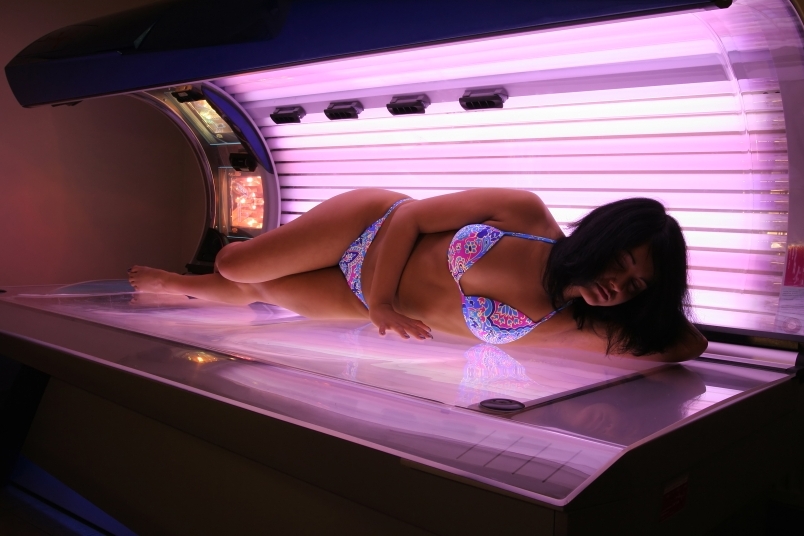 Psoralen can be taken orally or topically. The combination of psoralen with UVA light slows the overproduction of skin cells related to psoriasis.
Psoralen can be taken orally or topically. The combination of psoralen with UVA light slows the overproduction of skin cells related to psoriasis.
This type of light therapy is typically used for people who have more widespread psoriasis.
PUVA treatment is typically not recommended for long-term use. Your skin may become itchy or irritated at first with this method. Moisturizers can help relieve these side effects. This treatment can also cause nausea and headache.
Laser treatment
High levels of UVB light can be administered by a laser to treat specific areas affected by psoriasis. You may receive a course of laser treatment over several days, weeks, or months.
Each type of light or laser therapy has its own benefits and side effects. Work with a doctor to choose the best option for you.
The benefits of tanning beds aren’t clear. Tanning beds may help improve psoriasis, but they’re known to cause significant sun damage as well as cancer. As a result, the use of tanning beds is actively discouraged by many medical groups.
The National Psoriasis Foundation discourages the use of indoor tanning beds for a variety of reasons. One is that tanning beds generally emit more UVA light than UVB light. UVA light without medication, such as psoralen, is relatively ineffective at treating psoriasis.
In addition, the AAD opposes the use of tanning beds because prolonged or frequent exposure to radiation from sun lamps could lead to skin cancer.
Some people are also at risk of developing tanning addiction.
Still, some research suggests that indoor tanning beds may help psoriasis. A 2015 study concluded that indoor tanning beds may be useful in treating dermatologic conditions for people who are unable to access light therapy prescribed and managed by a doctor. The study encourages doctors to provide guidelines for this practice, as many try it anyway.
If you’re considering indoor tanning, speak with a doctor about the risks ahead of time. Ask about phototherapy, which is a much safer, more effective option.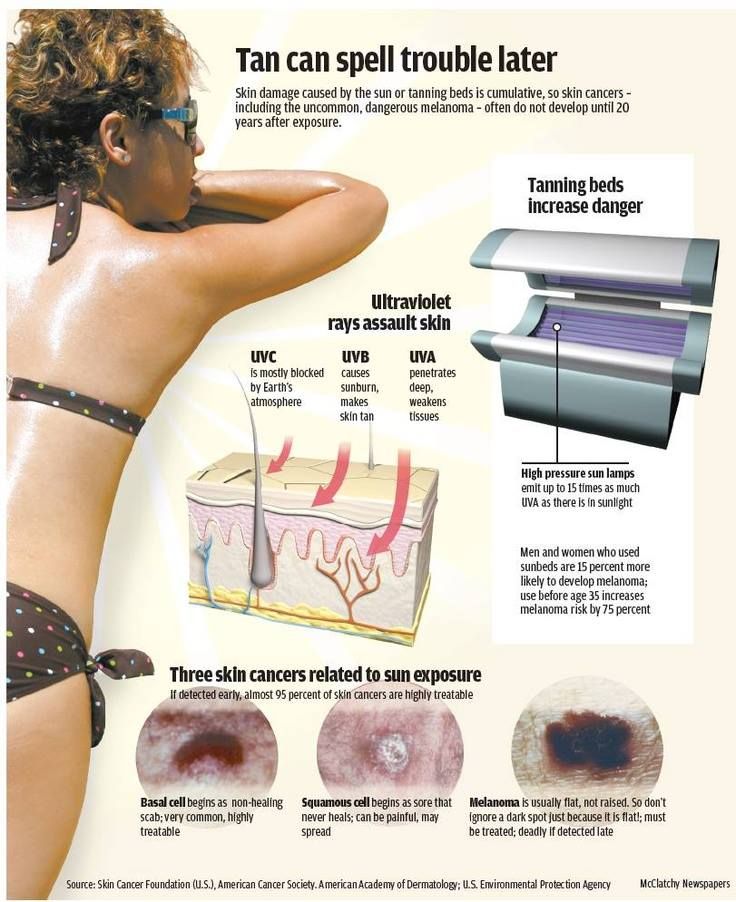
When compared with phototherapy, exposure to natural sunlight, or tanning, comes with many risks.
Indoor tanning isn’t as effective as phototherapy. It also increases the risk of melanoma by 59%.
Some topical psoriasis medications, including coal tar and tazarotene, can also increase your risk of sunburn.
Certain oral medications, such as soriatane and methotrexate, can also increase the risk of skin burns as well as skin cancer.
Other immunosuppressive drugs, such as biologics, which lower immune system activity, can also increase the risk of skin cancer.
Prescription phototherapy is done under medical supervision to ensure safety and monitor for side effects such as skin damage and sunburn.
Light therapy is one method for treating psoriasis, but it isn’t the only option. Work with a doctor to determine the best course of action for treating your psoriasis. Together, you can develop a treatment plan that best suits your lifestyle and needs.
can visit or not, the benefits and harms of a solarium for psoriasis
Natural sunlight is good for skin with atopic dermatitis.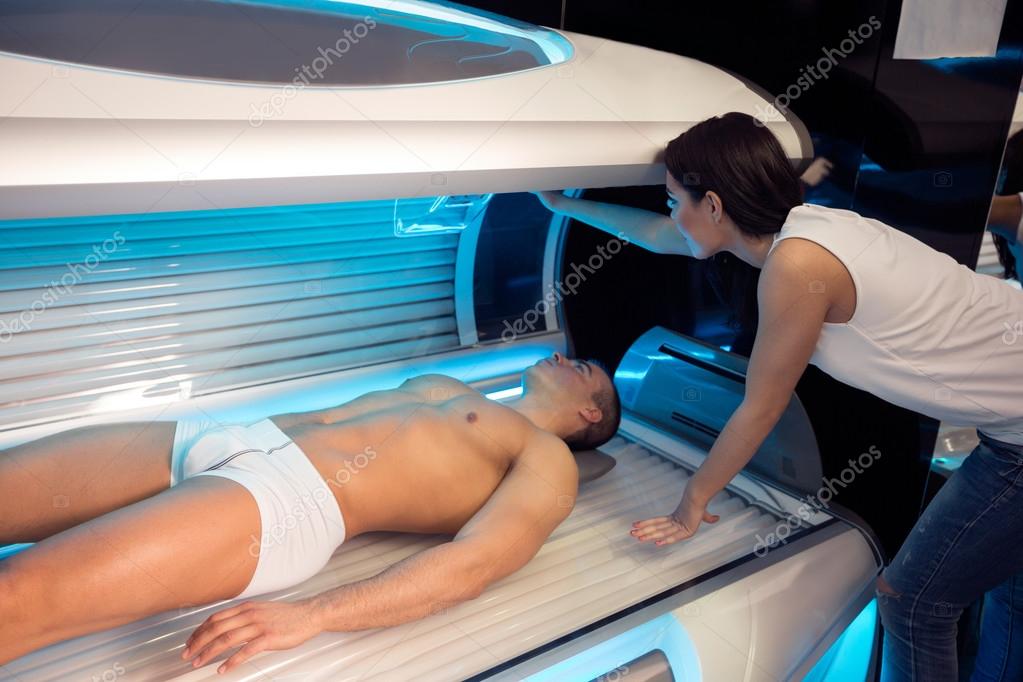 However, the short summer season makes it necessary to look for a replacement for sunlight in winter. The solarium helps to solve the problem of the lack of sun on the street during the cold season. Even short sessions contribute to the production of vitamin D, allow you to warm up, get a charge of vivacity and good mood.
However, the short summer season makes it necessary to look for a replacement for sunlight in winter. The solarium helps to solve the problem of the lack of sun on the street during the cold season. Even short sessions contribute to the production of vitamin D, allow you to warm up, get a charge of vivacity and good mood.
Solarium for psoriasis: benefit or harm
In atopic dermatitis, the skin may respond to a visit to the solarium with both improvement and deterioration. Solarium increases the risk of side effects – dry skin, the appearance of new lesions. However, in winter, subject to the recommendations of the attending physician and the rules for visiting the solarium, people with atomic dermatitis can make up for the lack of natural sunlight in this way. The specialist will recommend the duration and frequency of sessions in each individual case, so his consultation before making a decision is mandatory.
Solarium benefits for atopic skin:
- production of vitamin D in the body, the synthesis of which is reduced during the cold season;
- better absorption of calcium;
- regression of rashes;
- strengthening immunity by stimulating the production of antibodies and increasing resistance to stress;
- relief of inflammation.

Contraindications and limitations of visiting a solarium for atopic dermatitis:
- presence of active foci of inflammation;
- acute viral infections;
- summer form of the disease, in which new rashes appear under the influence of ultraviolet radiation;
- pustular type of disease characterized by the formation of pustules;
- the presence of such concomitant conditions as photodermatosis, erythroderma.
Guidelines for safe tanning for psoriasis
In most cases, the course of treatment with a solarium involves 20-30 treatments every two days. Sessions should start at 5 minutes. To tan safely, you should follow simple rules:
- choose a vertical solarium in which the entire body is heated evenly;
- do not apply care products that are not compatible with UV rays;
- consider the first procedure as a test procedure and assess the condition of the skin after it;
- continue sessions only in the absence of discomfort;
- exclude for the period of solarium graying factors that provoke inflammation – alcohol, smoking, “junk” food, as well as stress.

Duration of a solarium session for atopic dermatitis
Recommendations for the duration of a solarium stay are issued by a doctor based on the clinical picture, the patient’s health status and skin characteristics. The duration of the first session should not exceed five minutes, after which it will be possible to make a decision to gradually increase (or decrease) the time spent under the rays.
Read also:
- Ointment Akriderm SK for psoriasis
- How to properly care for skin with psoriasis
- Causes of development and treatment of psoriasis
- Will the spa treatment of psoriasis have an effect
Solarium for psoriasis: harm or benefit?
Indeed, for many patients with this disease, sunbathing gave an excellent effect and got rid of its unpleasant manifestations for a long time. Of course, a little ultraviolet radiation benefits the skin and makes it look healthy.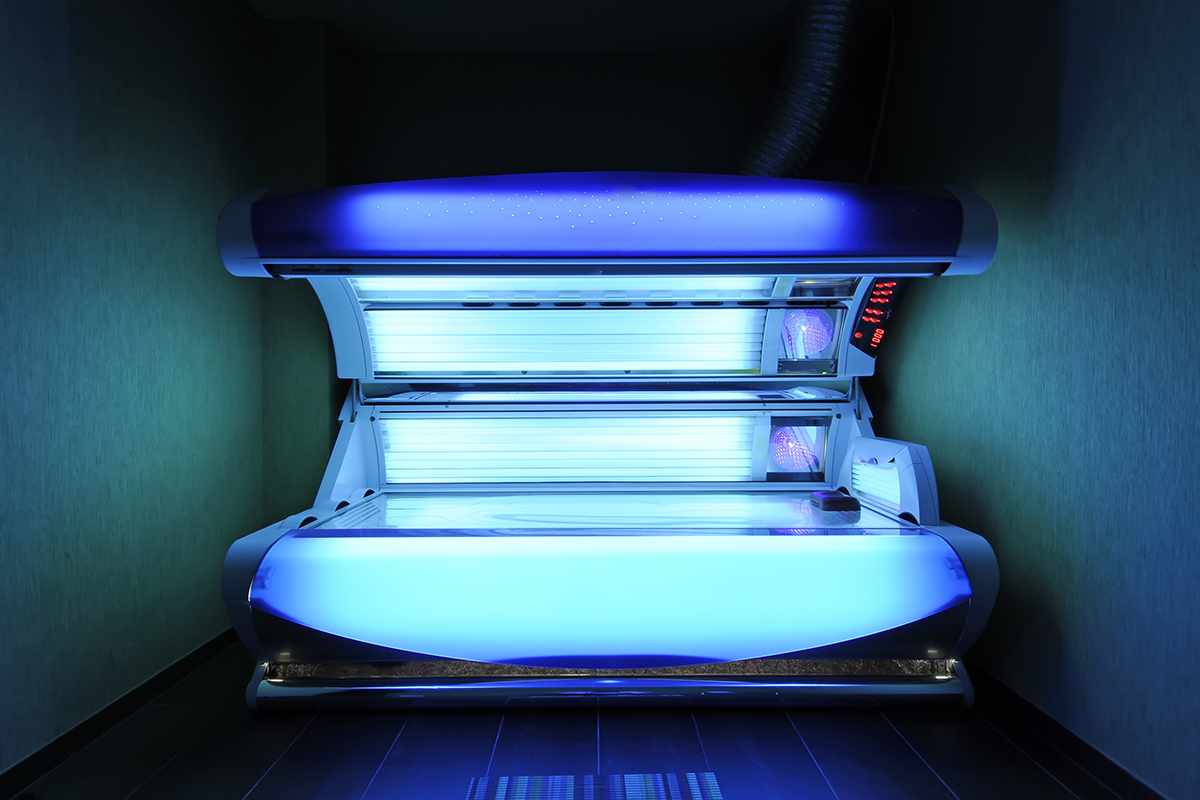 But still, is a solarium useful for psoriasis? Let’s figure it out together.
But still, is a solarium useful for psoriasis? Let’s figure it out together.
Is it possible to visit a solarium with psoriasis?
According to statistics, in a quarter of cases, a dosed visit to the solarium really improves the patient’s condition and has a positive effect on the course of the disease. However, in many patients after sunbathing, there are both relapses of the disease and worsening of its course. The question of whether it is possible to visit a solarium with psoriasis can only be answered by the attending dermatologist, based on clinical manifestations.
Benefit
It’s no secret that ultraviolet rays are a source of vitamin D, which allows the body to absorb calcium, regression of psoriasis rashes. The main benefits of ultraviolet light include:
- stimulation of the production of antibodies that increase resistance to viruses and infections;
- general strengthening effect on the body;
- relief of inflammation;
Harm
Patients with psoriasis, it is important to understand that ultraviolet rays and a visit to the solarium can adversely affect their health.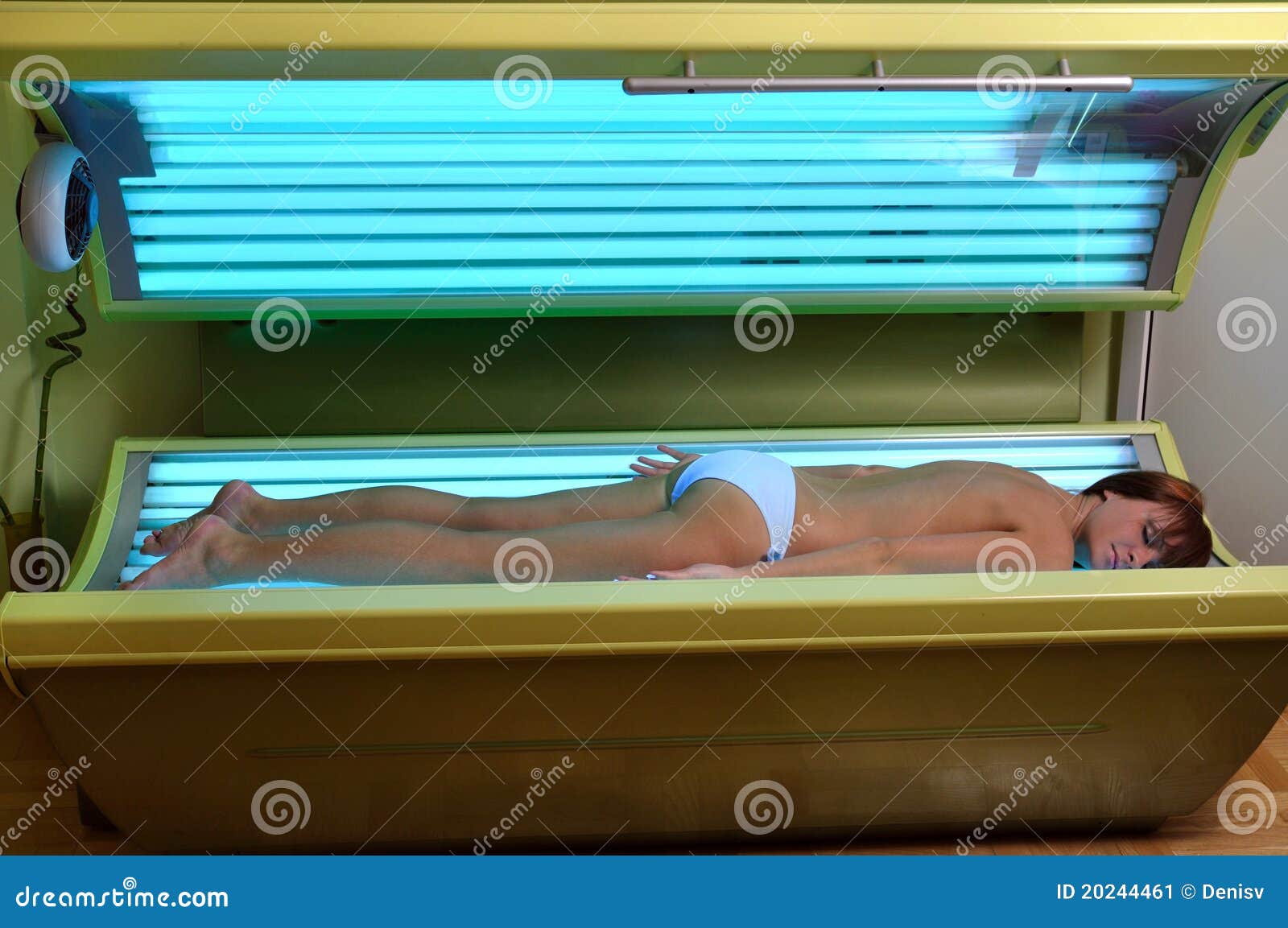 The dangers of the procedures are as follows:
The dangers of the procedures are as follows:
- risk of burns;
- eye diseases.
- development of skin cancer and photoaging
Of course, the lamps used in the solarium eliminate the risk of burns if the session is carried out correctly. But trusting the benefits and harms of visiting such places should only be assessed by a specialist.
A visit to the solarium will not be effective in the pustular type of the disease, when the skin becomes blistered (especially in case of exacerbations). Due to heating, inflammation will increase, a chain reaction will occur and the number of elements on the skin will increase.
The solarium will also be ineffective in the summer form of the disease, which manifests itself under the influence of ultraviolet radiation. A visit to the solarium with this form of psoriasis can provoke the appearance of new rashes both in the progress stage and in remission, leading to an exacerbation. There will be no benefit from sunbathing and if the disease is aggravated by photodermatosis and erythroderma.
There will be no benefit from sunbathing and if the disease is aggravated by photodermatosis and erythroderma.
Does solarium help with psoriasis?
UV irradiation really neutralizes plaque psoriasis vulgaris. Sunbathing, with their proper use, relieve inflammation, contribute to a more rapid regression of rashes. Solarium helps to quickly mask unpleasant rashes.
It is believed that a solarium is especially useful for guttate psoriasis, especially in winter, when a lack of vitamin D3 is sometimes felt very acutely. However, of key importance in UV therapy is how many minutes the patient visits the solarium, and what combinations of UV lamps are installed in it. Most often, with psoriasis, patients begin with a 5-minute session.
How to sunbathe in case of psoriasis?
Before you start sunbathing, be sure to consult with your dermatologist. The specialist will help you choose a schedule for visiting the solarium and conduct a weekly examination to adjust the course of therapy. A full course of treatment usually consists of 20-30 sessions. It is recommended to visit the solarium approximately once every two days.
A full course of treatment usually consists of 20-30 sessions. It is recommended to visit the solarium approximately once every two days.
Basic rules for visiting the solarium for psoriasis:
- Give preference to vertical solariums, which allow you to warm up all parts of the body.
- Do not choose tanning creams and ointments that are incompatible with ultraviolet radiation.
- After the first session, be sure to evaluate the effect of the procedure yourself. If no discomfort occurs, the procedure can be continued.
- Do not take into account the therapeutic effect of the solarium by increasing the amount of session time. This can negatively affect the condition of the skin.
- Choose only certified tanning studios and be sure to apply special products to areas affected by psoriasis and healthy skin. As a rule, such funds are prescribed by a dermatologist.
- When treating psoriasis with a solarium, be sure to eliminate all factors that provoke the disease.




